#postclassic period
Explore tagged Tumblr posts
Text
The Mezcala sculptural style of Guerrero emphasizes geometric abstraction in both human figures and architectural models. Few examples have been found in their original context, and thus the function, meaning, and even the length of time during which the style was in use remain ill defined. Contributing to the question of chronology is the fact that other Mesoamerican peoples, from the latter centuries of the Late Formative to the Late Postclassic periods (200-1500 CE), acquired and preserved these works as heirlooms. They have been found at sites throughout Mexico, and large numbers were excavated from ritual caches in the Templo Mayor, the main temple of the fifteenth-century Mexica (Aztecs) of Tenochtitlan (Mexico City). In the twentieth century, the minimalistic Mezcala artworks fascinated the Mexican artist and cultural historian Miguel Covarrubias, who compared them favorably to other sculptural traditions such as the celebrated Cycladic style of ancient Greece. This example features the typical Mezcala four-columned structure atop a pyramidal platform articulated by apron-moldings on the uppermost tier. A central staircase leads into the structure at the midpoint between the columns. A lone figure stands between the columns and inside the structure. No buildings of this type have survived in Guerrero, however, which leaves open the question of whether this carving faithfully represents the architectural traditions of the region during the Formative and Classic periods.
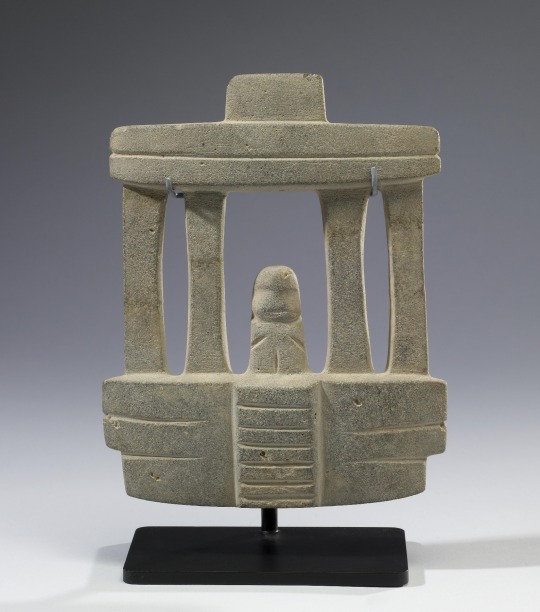
~ Temple Model.
Culture: Mezcala
Date: 300 B.C.-A.D. 500 (?)
Period: Terminal Formative-Early Classic
Medium: Stone
#history#sculpture#art#art history#architecture#preclassic era#classic period#postclassic period#mesoamerica#mezcala culture#aztec empire#tenochtitlan#mexico#guerrero#mexico city#templo mayor#miguel covarrubias
220 notes
·
View notes
Text
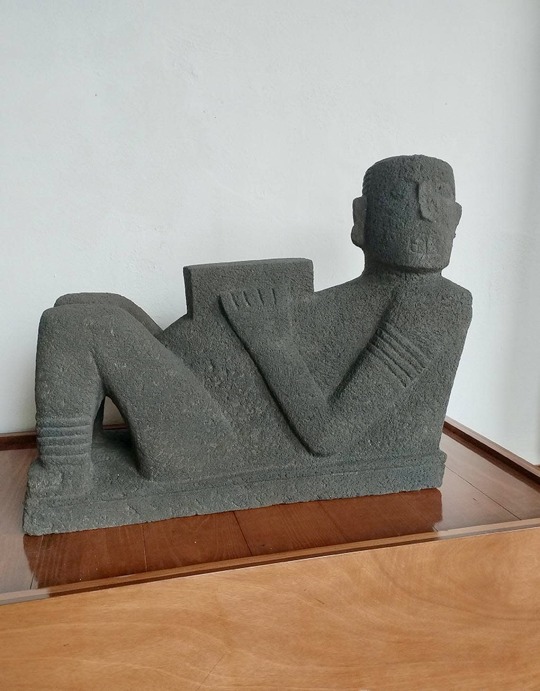
440-Pound Mayan Sculpture Discovered in Mexico
Less than a year after a massive, ancient stone carving was discovered in western Mexico, it is on display for the public for the first time, officials said.
During a construction project of the Pátzcuaro market in August, researchers uncovered an enormous sculpture of a person lying on their back and holding a stone, according to a May 10 news release from the National Institute of Anthropology and History, Instituto Nacional de Antropología e Historia.
Weighing around 440 pounds, the sculpture is about 3 feet long and 2.5 feet tall, researchers said. It is carved from augite andesite, a dark black porous volcanic stone, according to the releas
The heavy statue was brought to researchers after it was found dismantled, officials said, and through preservation and cleaning, it was restored to its original shape and color.
The stone was carved by the Mayans during the late postclassic period, between 1350 and 1521, according to the release.
It is uncommon to find these kinds of artifacts in western Mexico, archaeologists said, which raises questions as to why it was there.
The image of a seated person is classic for a chacmool, a ritualistic table that was used in pre-Hispanic times, according to the release. Archaeologists believe it was used in sacrificial and offering ceremonies.
Researchers are not sure of the origin of chacmools, and few have been found in the archaeological record, the researchers said.
Only 70 pieces have ever been found, and one hasn’t been found in this region of Mexico since 1938, archaeologists said.
Since the piece has been well-preserved, the researchers hope it will shed light on how the sculptures were used and how the art form was created centuries ago.
The sculpture is now on display at the Museum of Popular Arts and Industries of Pátzcuaro.
Pátzcuaro is in southwest Mexico, about a 230-mile drive west from Mexico City.
By Irene Wright.
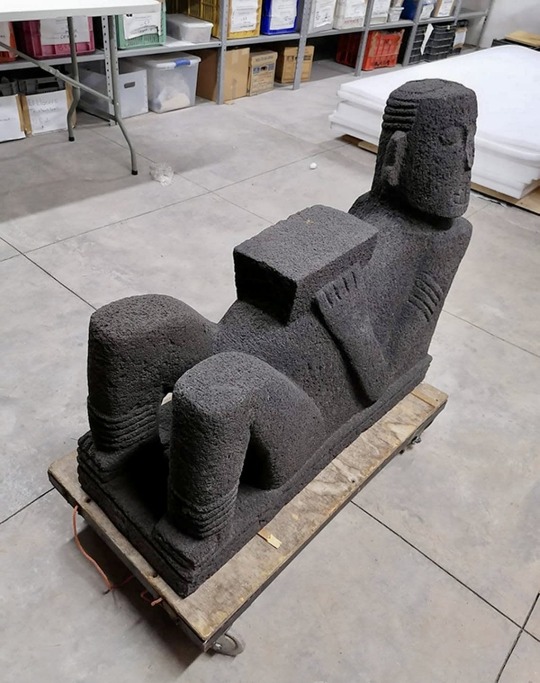
#440-Pound Mayan Sculpture Discovered in Mexico#late postclassic period#chacmool#sculpture#stone sculpture#ritualistic table#ancient artifacts#archeology#archeolgst#history#history news#ancient history#ancient culture#ancient civilizations
25 notes
·
View notes
Text
By the way, so that you know, medieval monks and nuns were using their rare skill of literacy to write porn (among other things).
Source - I randomly remembered one documentary from years ago, so sorry if this is misinformation, I will try searching for proofs, but whatever I think that this image is beautiful.
My own speculation is that they probably also shared it with other people in the monastery, because things kind of were like that before the Internet if witnesses are to be believed.
2 notes
·
View notes
Text
Xochipala is a minor archaeological site in the Mexican state of Guerrero, whose name has become attached, somewhat erroneously, to a style of Formative Period figurines and pottery from 1500 to 200 BCE.[1] The archaeological site is much later and belongs to the Classic and Postclassic eras, approximately 200–1400 CE.[2]

Acrobat
Mexico, Guerrero, Xochipala style, 900–500 BCE
#history#sculpture#preclassic period#classic period#postclassic period#mesoamerica#xochipala#mexico#guerrero#mesoamerica ref#xochipala ref
177 notes
·
View notes
Text

Lápida lunar; México, Oaxaca, Tlaxlaco; postclassic period, 1000-1521; stone.
101 notes
·
View notes
Note
Hi midwestern dude,
I would like to ask you about your favourite obscure fact about a west mesoamerican culture and 2) why you its an area of neglect compared others.
Caxcan oral tradition purports that the Caxcan were the only people to stay in the vicinity of their sacred mountain while all the other tribes, like the Mexica, left their homeland. So, if you want to look for Aztlan I would begin looking around Cerro de las Ventanas in Zacatecas.
West Mexico is understudied because there was this misconception that the only advanced culture in the region was the Kingdom of Tzintzuntzan and that before the Late Postclassic period the people in West Mexico just lived simple lives in huts and farmed. So, places like Los Guachimontones, Ixtlán del Rio, Ixtepete, and El Chanel were overlooked until the mid to late 20th century. Compare that to Central and Southeastern Mesoamerica where research had been ongoing since the mid 19th century. West Mexico just hasn't had the attention and focus that it deserves. Which is unfortunate because it offers so much potential data to help understand Mesoamerica more broadly. For example, understanding the Uto-Aztecan migrations into Mesoamerica from north-central Mexico starting in the mid-6th century or so.
81 notes
·
View notes
Photo

Quetzalcóatl
Quetzalcóatl (pron. Quet-zal-co-at) or 'Plumed Serpent' was one of the most important gods in ancient Mesoamerica. Quetzalcóatl was the god of winds and rain, and the creator of the world and humanity. A mix of bird and rattlesnake, his name is a combination of the Nahuatl words quetzal (the emerald plumed bird) and coatl (serpent).
In Central Mexico from 1200, the feathered serpent god was considered the patron god of priests and merchants as well as the god of learning, science, agriculture, crafts and the arts. He also invented the calendar, was identified with the Morning Star Venus, the rising morning star, he was associated with opossums and even discovered corn (maize) with the help of giant red ant that led him to a mountain packed full of grain and seeds. He was known as Kukulkán to the Maya, Gucumatz to the Quiché of Guatemala, and Ehecatl to the Gulf Coast Huastecs.
Quetzalcóatl was the son of the primordial androgynous god Ometeotl. In Aztec mythology he was the brother of Tezcatlipoca, Huizilopochtli and Xipe Totec. He is the 9th of the 13 Lords of the Day and is often associated with the rain god Tláloc. The god was particularly associated with the sacred site of Cholula, an important place of pilgrimage from 1200, and all round buildings of the Aztec culture were dedicated to the deity.
A Creator God
In the Late Postclassical period (from 1200) in Central Mexico the god came to be strongly associated with the wind (in particular as a bringer of rain clouds) and as the creator god Ehecatl-Quetzalcóatl. In Postclassical Nahua tradition Quetzalcóatl is also the creator of the cosmos along with either his brother Tezcatlipoca or Huitzilopochtli and is one of the four sons of Tonacateuctli and Tonacacihuatl, the original creator gods. After waiting for 600 years this aged couple instructed Quetzalcóatl to create the world. In some versions of the myth Quetzalcóatl and Tezcatlipoca repeatedly fight each other and as a consequence the four ages are created and destroyed with each successive battle between the two gods.
In an alternative version of creation Quetzalcóatl and Tezcatlipoca are more cooperative and together they create the sun, the first man and woman, fire and the rain gods. The pair of gods had created the earth and the sky when they transformed themselves into huge snakes and ripped in two the female reptilian monster known as Tlaltcuhtli (or Cipactli), one part becoming the earth and the other the sky. Trees, plants and flowers sprang from the dead creature's hair and skin whilst springs and caves were made from her eyes and nose and the valleys and mountains came from her mouth. In some versions of the story the divine spirit of Cipactli was understandably upset to have lost her physical body in such a brutal attack and the only way to appease her was through the sacrifice of blood and hearts and so one of the more unpalatable practices of ancient Mesoamerican culture, the ritual of human sacrifice, was justified.
Continue reading...
129 notes
·
View notes
Text
We have clerical records from European High Middle Ages that deal with a lot of daily stuff, like marriages and baptisms. And those records show that on average between a pair getting officially married and them baptizing their first child passed 3-6 months. Which means that not only they had sex outside of marriage, but probably purposefully cohabitated for reasonable time before it.
Just some funny information
"Medieval people were very prudish, they would faint from an ankle flash"
Medieval people:





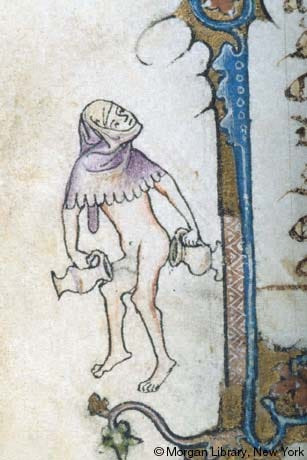

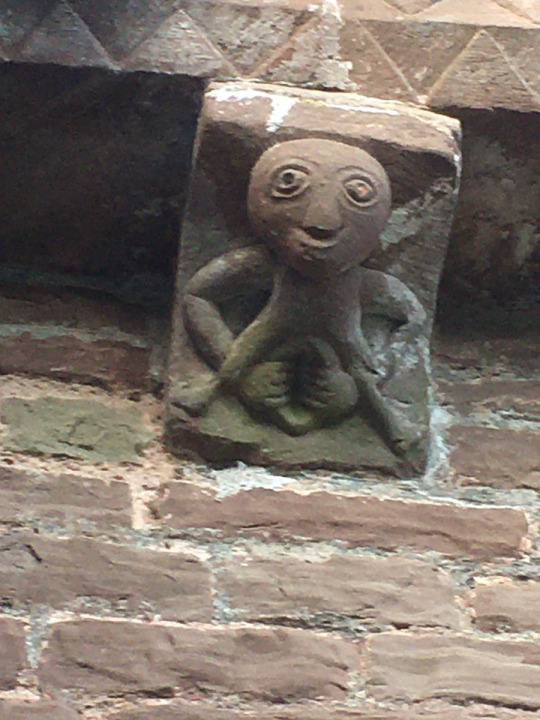
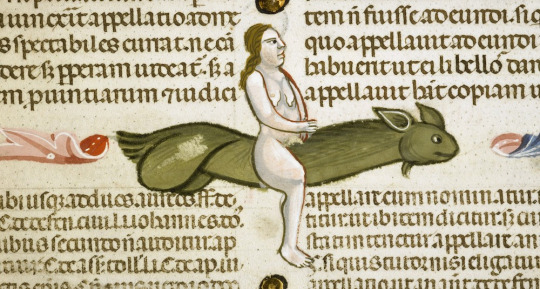
#also i am not expert but i think that dick on the third pic is not human#i remember reading a book on heraldry long time ago that said that people who routinely castrated animals could choose this as their crest#history#postclassical period
1K notes
·
View notes
Text
NOT COUNTING ROCKS (unless it’s a specific fossil from a time period you can name) or buildings (you cannot hold those)…
#Making my own because of the skew of the last one lol#My answer is still either acheulean hand-axes (800k years old) or Devonian/Silurian brachiopod fossils (350-450 million years old)#Depending on what u count#history#polls
97 notes
·
View notes
Text

~ Eagle effigy vessel.
Date: ca. A.D. 1450
Period: Late Postclassic
Place of origin: Eastern Nahua
Medium: Ceramic with polychrome slip
#history#museum#archeology#ancient history#archaeology#eagle effigy vessel#eagle#pottery#late postclassic period#nahua#ceramic#ca. a.d. 1450
2K notes
·
View notes
Text
Laundry day was an intercalary period observed in Early Postclassic American culture. It was a period of misrule during which conventional orders were thrown into disarray and commonplace rules inverted
82 notes
·
View notes
Text
Second point is especially ooph.
Also yes overwhelming majority of texts in vernacular in Europe before like 12 century that I know were written on wood tablets or ceramics (and minority was somehow connected to missionary work).
My frame of reference is slightly biased because vernacular texts are kind of notorious in history of Kievan Rus because in Novgorod there is many of them due to good conditions for presentation and relatively widespread literacy (mercantile republic duh), but yeah they were nothing like modern books or letters in all regards.

okay what did i miss
(yes some of these overlap and some are suppositions. for example if parchment is always used for ephemera, rough drafts, notes, and never re-used or re-purposed, we can also assume that the author is unaware of wax tablets as a concept)
6K notes
·
View notes
Text
#MosaicMonday:

Jaguar Pectoral Mixteca-Puebla, Tehuacán Late Postclassic period, c.1200–1400 Stone, shell, wood 3 3/8 x 6 3/8 x 1/2 in. (8.6 x 16.2 x 1.3 cm) Saint Louis Art Museum 163:1979
#animals in art#jaguar#pectoral#Indigenous art#mosaic#Mosaic Monday#feline#wild cat#Mesoamerican art#Saint Louis Art Museum
62 notes
·
View notes
Text
Don't want to dunk on that person specifically, but the idea that people that look black to us in Medieval art prove existence of black people in Medieval Europe is bad on a lot of accounts, but one of it is that Medieval art isn't known for its realism. Most of the time it was drawn from description alone, and even when an artist specifically wanted to make their skin different they rarely knew the actual skin tones. Like I think I saw a man on Medieval illustration that was literally black as coal and he was supposed to be an Arab. Luke the artist just read "Arabs have darker look" or something like that and drew what they imagined it to be like. And there are other things about Medieval art not being very realistic.
Which is not to say that there weren't non-white people in Europe. For one there was like a lot of Arabs and other people from SWANA all across the Mediterranean coast with some individuals travelling anywhere, and people from any part of Eurasia or Africa could (and did) just come there, but like search actual proves.
#not going to comment on the part about 'you can't complain about poc in historical dramas' because yes you can't but that's not the reason#people in historical dramas also have far too perfect teeth and skin and women wear makeup and men are too athletic and such#the only reason race is considered more unrealistic than this is because race is political and nice people don't complain about it#also i remember that scandal with tv series about trojan war with most characters being black#and for some reason most people arguing literally forgot to mention that it was filmed in an african country and mostly for local tv#like yeah wonder why most of the actors in african tv are black#history#txt#postclassical period
1 note
·
View note
Text

Huehueteotl
Aztec, Late Postclassic, 1200-1520 CE
This very old individual is thought to portray the Central Mexican deity Huehueteotl, the Old Fire God. This deity was conceptualized as an old man and had been revered in Central Mexico since at least the Preclassic period. The figure lacks Huehueteotl’s characteristic headdress, however, and thus could represent one of the venerated Central Mexican elder goddesses, such as Toci. Whatever the sex, the figure’s combination of half-closed eyes, wrinkled face, and nearly toothless mouth show without doubt that this piece depicts the face of a very old person.
65 notes
·
View notes
Text

Repost @archaeologyart
Vessel in the Shape of an Eagle. Place of origin: Mexico, Puebla, Tlaxcala, or Oaxaca, Nahua or Mixtec Period: Late Postclassic Period Date: 1250–1521 Medium: Ceramic with pigment.
139 notes
·
View notes